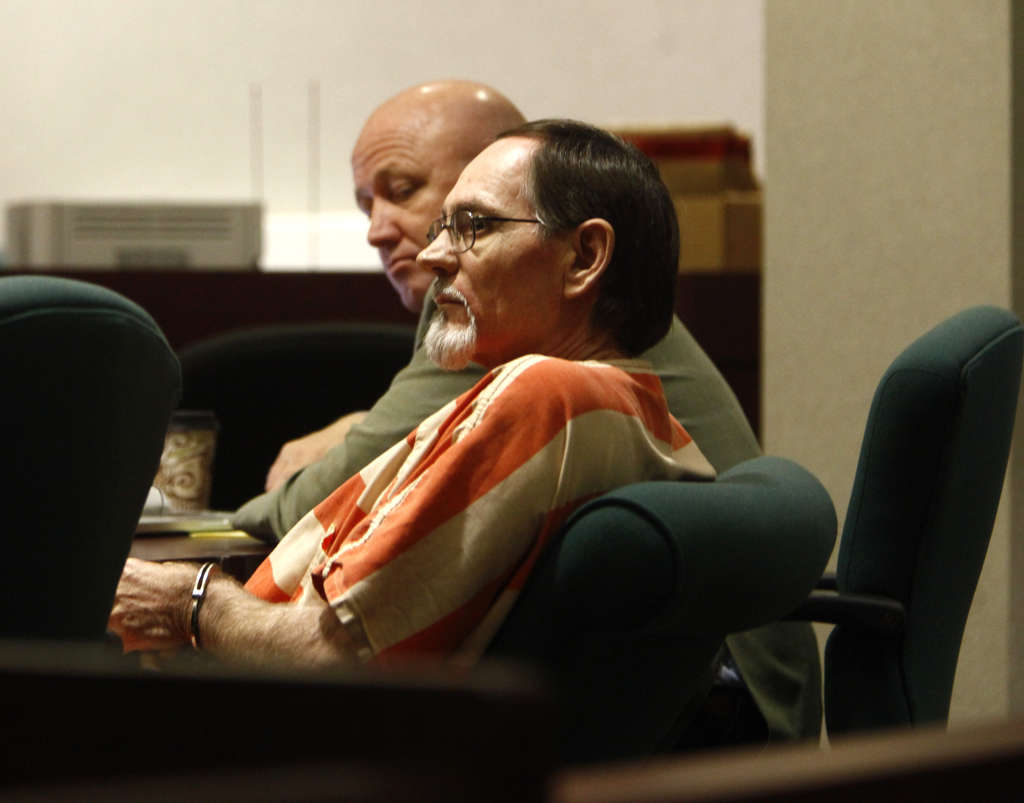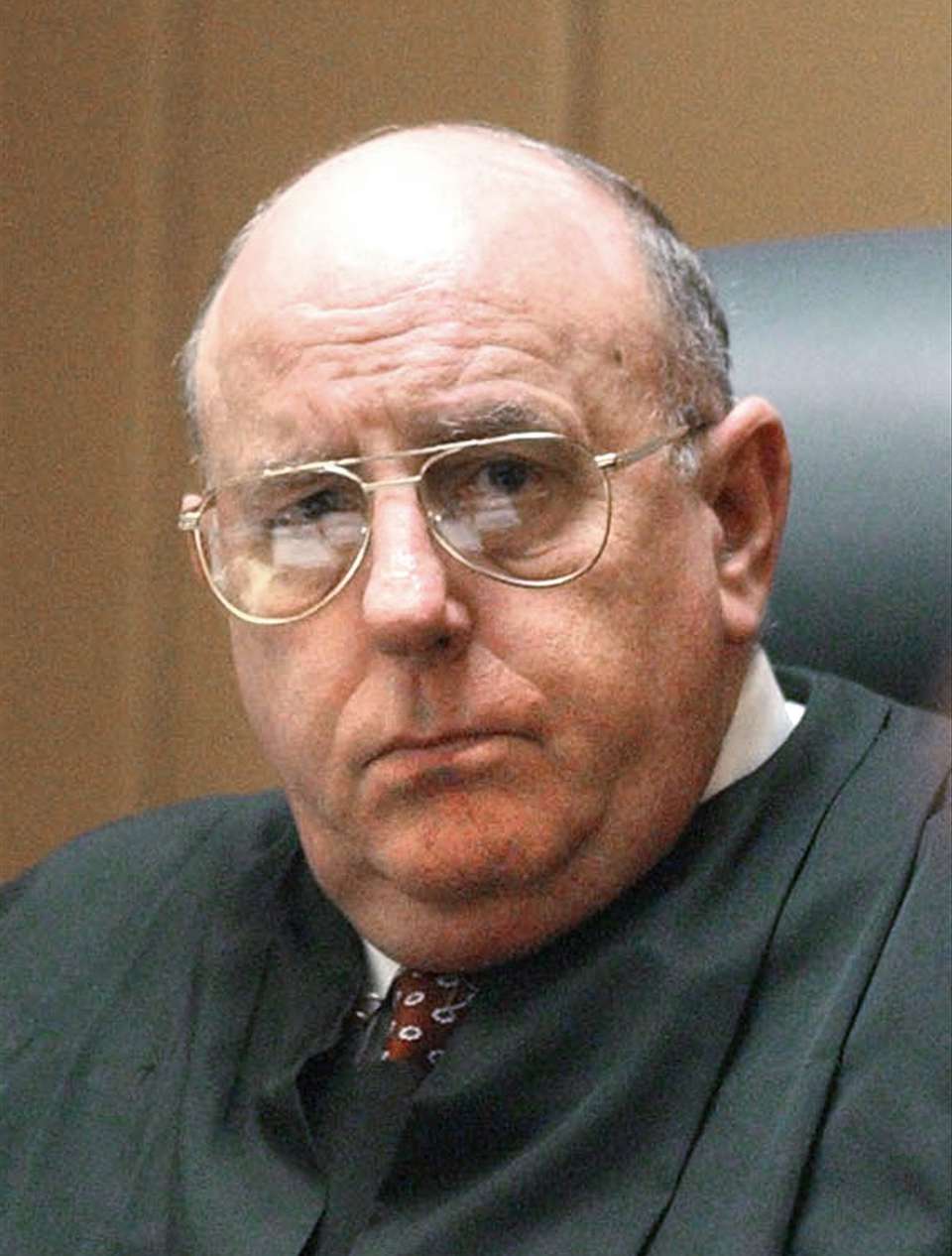Only in Florida
How the nation’s lowest bar for the death penalty has shaped death row

Florida has more than 170 people on death row today who may not have been condemned to die in any other state — the result of its one-of-a-kind law that allows a jury to recommend capital punishment by a simple majority vote, a Tampa Bay Times analysis has found.
Unburdened by the need to reach a unanimous decision, Florida juries typically don’t. Two-thirds of the people Florida has executed since 1995 were condemned to die on the recommendation of fewer than 12 jurors, the Times analysis found.
No other state allows juries to recommend death by a 7-5 vote. Of the 32 states that have the death penalty, 29 require a unanimous vote of 12. Alabama requires 10. Delaware calls for jurors to unanimously agree on whether the defendant is eligible for the death penalty, but their sentencing recommendation can be split.
Jurors are divided on most Florida executions
This month, the U.S. Supreme Court struck down Florida’s death penalty statute, forcing the Legislature to rewrite it. Although the court did not explicitly address the issue of non-unanimous jury votes, legal experts say this part of Florida’s law is in constitutional jeopardy.
The Times reviewed more than 450 death penalty cases dating back decades to determine how juries voted in the penalty phase of capital trials. The juries’ sentencing recommendations are merely advisory, another unusual feature, but no Florida judge has ignored a jury’s guidance in nearly two decades.
The Times found that prisoners who were sentenced to death based on non-unanimous jury recommendations were far more likely to have their cases overturned on direct appeal, or to be ultimately acquitted.
Florida leads the nation in death row exonerations. Of the 20 people who have been exonerated and for whom sentencing information is available, 15 were sent to death row by a divided jury. Three others were cases in which judges imposed the death penalty over a jury’s recommendation of life in prison.
“Those figures confirm our greatest fears about the Florida statute,” said Robert Dunham, executive director of the Death Penalty Information Center. “Because of the unreliability of non-unanimous sentences, it’s long been felt they increase the risk of sentencing innocent people to death.”
The latest exoneree, a Pasco County man named Derral W. Hodgkins, was condemned to die in 2013 after a jury recommended the death penalty for the murder of his former girlfriend Teresa Lodge in 2006. Despite his previous conviction for a horrific crime — he admitted to raping and driving his car over a 12-year-old girl — only a bare majority of jurors agreed that he deserved the death penalty. They voted 7-5.
Hodgkins walked off death row in October after the Florida Supreme Court threw out his conviction. The court called the prosecutors’ case “purely circumstantial” and said they had mischaracterized crucial DNA evidence, portraying it in a light that flattered their narrative.
Several years before Hodgkins there was Herman Lindsey, who was convicted and sent to death row for killing a woman during a Fort Lauderdale pawnshop robbery. The murder took place in 1994, but police pinned it on Lindsey 12 years later, and a jury voted 8-4 to recommend death.
In 2009, the Supreme Court voted unanimously to overturn Lindsey’s conviction. Laying out the evidence in the case, the justices said none of it linked Lindsey to the scene of the crime and all of it was circumstantial.
“The state’s evidence, while perhaps sufficient to create some suspicion, is simply not sufficient to support a conviction,” they wrote.
Of the 389 people currently on Florida’s death row, four out of five were sent there by a non-unanimous jury that could not sentence them to death in almost any other state, according to the Times analysis. Only 77 are condemned to die because a jury voted unanimously, and 22 others waived their right to a jury.
And yet, data on convictions, exonerations, and executions suggest that these non-unanimous jury verdicts often don’t survive scrutiny by appellate courts. The Times analysis found that a person sentenced to death row by a unanimous jury is more likely to be executed than someone condemned by a divided jury.
Over the course of the past two decades, the state has executed 59 people. A third of them were sentenced to death by unanimous juries, compared with one in five of the prisoners in the state’s general death row population.
It’s impossible to say with certainty whether Florida would send more or fewer people to death row if a future law required jurors to reach a unanimous decision. No one knows in which direction today’s 7-5 or 9-3 juries would swing if everyone had to agree.
“Florida has long been an outlier state with regard to our death penalty scheme,” said Assistant Public Defender Pete Mills of the 10th Judicial Circuit, who chairs the Florida Public Defender Association’s death penalty committee.
“That’s a polite way of saying that we are the kid everybody knew in grade school that ate paste.”
Most exonerated death row inmates were split votes
The quality of the jury deliberations in the Hodgkins case may demonstrate how flawed cases can wind up on death row.
After taking an initial vote, six jurors raised their hands in favor of condemning Hodgkins to death. Six hands went up in favor of life in prison without parole.
“There wasn’t a person who didn’t believe he was guilty,” said juror Francine Gillam, 66. But that wasn’t the question they were tasked with answering. Gillam, a devout Catholic, said she was one of several jurors who couldn’t bring themselves to vote for capital punishment, not because they doubted the state’s evidence, but because of their religious convictions.
“We were just deadlocked,” said juror Jay Stamper, 55. “For almost the whole time we were in there, it was 6-6.”
They went around one more time, each person giving the reasoning behind the vote. By the time everyone had spoken, one woman had changed her mind. Asked how long this process took, three jurors interviewed by the Times estimated deliberations lasted an hour or two.
“It wasn’t that much of a discussion,” Gillam recalled. “We kind of batted the issues around the table, like, should this monster live?”
“One person changed her mind and that was that,” Stamper said.
To the defense attorneys who represented Hodgkins at trial, the fact that their client’s life hung on one juror’s about-face was stunning.
“That’s crazy,” defense attorney Bjorn Brunvand said. “First of all I’m shocked they didn’t have problems with whether or not he was guilty. But then, just the fact that it’s so whimsical … it doesn’t sound like their decision was based on any significant consideration of the aggravating or mitigating factors.”
In 2006, the Capital Jury Project, a consortium of researchers who study decision-making in death penalty cases, released the results of a survey of jurors from 13 states. In it, they found that jurors who were not required to reach a unanimous vote to recommend a death sentence were more likely to take less time to make a decision.
Among all those surveyed, Florida jurors were the fastest decision makers — 38 percent reported spending an hour or less on their sentencing recommendation.
Florida jurors were also the least likely to ask to review testimony or read a transcript during deliberations, and the most likely to reach a decision after only one vote.
The study called it “an apparent rush to judgment.”
Hodgkins’ acquittal shocked the jurors who learned about it, several of whom said they feared he would murder again. But the fact that the Florida Supreme Court reversed a death sentence recommended by a closely divided jury is no surprise.
Nearly half of all 7-5 jury decisions are overturned on appeal, according to a study by the Florida Senate’s Criminal Justice Committee. Analyzing jury verdicts from 2000 to 2012, the committee found that 47 percent of 7-5 decisions were either overturned and sent back for a new trial, or the defendant was acquitted. In some cases, the prisoner’s sentence was reduced to life without parole.
By comparison, 63 percent of unanimous jury decisions over the same period were upheld by higher courts.
It’s not that state Supreme Court justices see the closely divided jury recommendations and decide to overturn the case. But experts in jury dynamics and death penalty cases say that because there’s less discussion, Florida jurors are less likely to raise the specter of doubt or spend hours examining the case for possible holes.
“When they can do less than a unanimous verdict, people on the jury can look around and see, well, we’ve got eight people voting for death. If I vote for life, then I can go home and say I didn’t vote for death, and the guy still gets the death penalty,” O.H. Eaton Jr., a retired circuit judge and nationally recognized death penalty expert, testified before a state Senate committee last week.

“Whereas when you have a unanimous verdict, everybody’s got to work, and they’ve got to come to grips with the issue, and they’ve got to make a decision.”
Florida prosecutors are pushing a bill that would require jurors to reach a unanimous decision on whether the aggravating factors in the case outweigh the mitigating factors. But when it comes to recommending a sentence, the bill raises the standard only to a supermajority, a 9-3 vote.
State Attorney Brad King of the Fifth Judicial Circuit in Ocala told lawmakers last week that jurors aren’t always honest during voir dire — the questioning of prospective jurors — about their true feelings on capital punishment.

“We need some safety valve for that one particular, or those three particular jurors that just say: 'I can’t do this,’ ” King said.
To many defense attorneys, the prosecutors’ bill reads like an obvious attempt to hold onto their advantage in death penalty cases.
Asked what would have happened if they had been required to reach a unanimous verdict, jurors in Hodgkins’ case joked they might still be deliberating years later.
Stacey Ness, a juror who voted in favor of the death penalty, speculated that the case would have ended in a life sentence.
“You can only convince so many people, and if someone is truly set in their religious beliefs, like a real strong Catholic, they’re not going to impose the death penalty,” she said.
Gillam, who opposed the death penalty at the time, guessed the opposite.
Both sides had apparently been willing to bend, but the discussion never reached that point.
Contact Anna M. Phillips at [email protected] or (813) 226-3354. Follow @annamphillips.